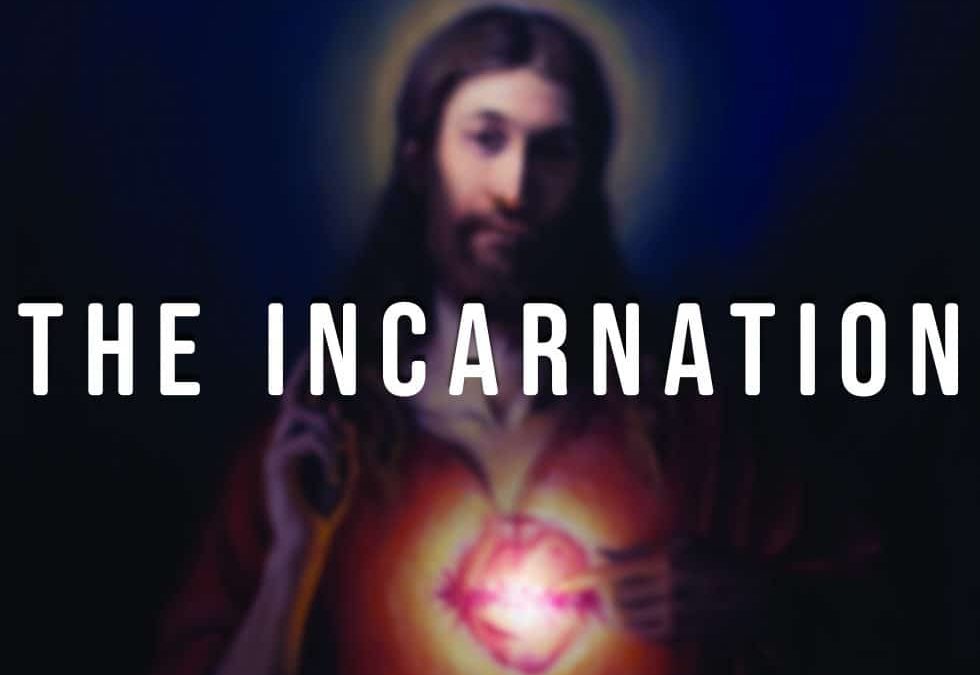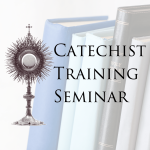Who is Jesus Christ?
When we profess the Nicene Creed, we declare that Jesus is uncreated, of the same divine substance as God the Father, eternal, truly God and that he became man. The Church also teaches in the Catechism of the Catholic Church that “Jesus Christ is true God and true man” (464). In hearing this, we proclaim, “Amen!” But do we know what these statements mean?
In my experience as a catechist, I have found there is a desire to know Christ more but also that there are many misunderstandings about what has been revealed. As an example, some people are shocked to learn Jesus Christ is not a human person. Others are surprised to hear Jesus had a human soul. And some are amazed to discover that Jesus possessed two intellects and two wills. The Incarnation is a profound truth and, even though we will never fully comprehend it, this should not hinder us from penetrating this mystery of the faith in our studies so that we can come to know Christ more deeply and grow in our relationship with him.
The Incarnation
God has revealed that at Jesus’ conception in Mary’s womb more than 2000 years ago, the Second Person of the Trinity became incarnate (was “made flesh”). God the Son united himself to a human nature and became man. In this act, his divinity was not at all weakened or changed. When Jesus walked the streets of Jerusalem, he was not sometimes God and sometimes man nor was he a mixture of humanity and divinity. Jesus was a divine person who fully possessed both the divine nature and a human nature: Jesus was true God and true man.
The Second Person of the Trinity
In my previous article on the doctrine of the Holy Trinity, I discussed how God is the Supreme Being with one divine nature and three divine Persons: God the Father, God the Son and God the Holy Spirit. Each divine person is distinct but inseparable from the other persons. Each person fully possesses the divine nature — so each is fully God — and what distinguishes them is their relationship with the other persons.
And it is important to be aware of the meaning of the terms “nature” and “person.” The term “nature” refers to the attributes of any given being (there is a dog nature, a human nature, a divine nature, etc). The term “person” refers to a rational being, one who can think and freely choose. (There are the three divine persons, numerous human persons, and angelic persons). We can think of the relationship of a person and a nature in an analogous way: we have an operator (the person) who has specific operations possible (the nature).
With this in mind, the Second Person of the Trinity (“the operator”) fully possesses the divine nature (“the operations possible”). Having the divine nature, God the Son possesses all the divine attributes. These include having the divine intellect and will, being all-powerful, all-knowing, perfect, and eternal. Before the Incarnation, God the Son was pure spirit with no material parts, and he was outside of time with no beginning and no end. Though a distinct person in the one Godhead, God the Son is always in communion with the other two divine persons as the three exist in an inseparable way.
When God Became Man
With the Incarnation, God the Son united himself to a human nature with no change to his divinity. The result is that there is one person — a divine person — who now fully possesses two natures — the divine nature and a human nature.
Recall that it is the person who is the operator and the nature that defines what operations are possible. Therefore, after the Incarnation, the Second Divine Person can now act both as God does and as man does. Because of the divine nature, Jesus could cure the sick, make the deaf hear and the blind see, calm storms, walk on water, raise the dead, and forgive sins. Jesus also has the divine intellect with perfect knowledge and the divine will that is pure love. Being God the Son, Jesus was always in communion with God the Father and God the Holy Spirit. Though Jesus often chose to refrain from using his divine powers, the divine nature was in no way lost or weakened in the Incarnation.
Because Jesus also fully possessed a human nature, he could walk, talk, laugh, cry, experience pain, be humiliated, suffer, and die. He also now had a finite human intellect, a human will, a human body and a human soul. In uniting himself with a human nature, God the Son became true God and true man, but he was not like us in every way.
Like Us In All Things Except…
In uniting himself to a human nature, God the Son acquired human attributes, but he remained fully divine. Because of this, Jesus never sinned (Hebrews 4:15). Sin is an offense against God and it causes us turn away from God to varying degrees. Being a divine person, it was impossible for Jesus to turn away from himself or to fall out of communion with the other persons of the Trinity.
Jesus also did not have the virtues of faith or hope as we do. Faith is the virtue of believing even though we do not yet see God (2 Corinthians 5:7; Hebrews 11:1). Hope is the virtue of eagerly awaiting what one does not yet possess. In becoming man, Jesus never ceased being God even for a moment, so he did not need the theological virtues of faith or hope. He always has an immediate vision of himself and the other persons of the Trinity.
The Errors About Jesus Christ
In trying to better understand the Incarnation, it can be beneficial to compare what we believe about Jesus with some of the heresies that have existed over the centuries.
There were several early heresies that rejected the doctrine that Jesus was truly God. One of these was Arianism. They taught that Jesus was the first created being who was like God but not equal to God. Docetism held that Jesus was merely an illusion; God did not truly take on flesh but only appeared to do this. Adoptionism believed that Jesus was a human person who was chosen by God for a unique role and was given extraordinary powers by God but was never equal to God.
There were other heretical groups who accepted the belief that Jesus was God but professed errors in how they explained the Incarnation. Monophysitism held that when God became man, the divine nature absorbed the human nature so in Jesus Christ there was only one nature, the divine nature. Nestorianism believed that in Jesus there were two persons: a divine person with a divine nature and a human person with a human nature. Monothelitism agreed with the Church that Jesus was one person with two natures and that he had both the divine intellect and a human intellect, however, they held there was only one will in Jesus teaching that the divine will replaced the human will.
Each of these heresies arose in the first six hundred years of Christianity and all of them were adamantly rejected.
Who is Jesus Christ?
Over time, the Church has responded to heresies such as these by clearly defining and clarifying what has been revealed. In regards to Jesus Christ, the Church teaches that he is God, of the same substance as the Father and uncreated. When God the Son became man, he united himself to a human nature taking on human flesh. He remained one person — a divine person — who now had two natures: the divine nature and a human nature. With the divine nature, Jesus had the divine intellect, the divine will, and could do all things that God can do. Having a human nature, the divine person now also had a finite human intellect, a human will, and a human soul. Jesus could walk the shores of Galilee, laugh, cry and, most importantly, suffer and die for our salvation.
(For further reading, go to Catechism of the Catholic Church, 430-483.)



